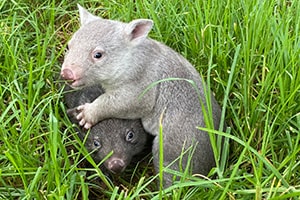Tree Hollows for Wildlife
Natural tree hollows are an increasingly scarce and valuable resource for many native species and for some they are absolutely essential. Hollows provide safe places to shelter and in many cases to breed.
The destruction of dead and living hollow-bearing trees results in the displacement and decline of all wildlife who are depend on them for their survival.
The types of hollows needed by our wildlife are generally found in mature and dead trees. For some animals small openings of only a few centimetres are needed but others need much larger entry points.
Young trees rarely contain hollows suitable for wildlife. As trees age they are subject to the extremes of the weather and attacks from insects.
Animals and birds do not select tree hollows at random. Factors such as entrance size and shape, depth and degree of insulation generally dictate which species uses which hollows and their frequency of use during summer and winter.
Small hollows with narrow entrances suitable for small animals such as the Brush-tailed phascogale and the eastern pygmy-possum take about 100 years to form. Hollows of a medium size and suitable for animals such as parrots will take around 200 years to form, and the larger and deeper hollows occupied by glossy black cockatoos and other larger animals such as masked owls can take even longer (Mackowski 1984; Menkorst 1984; and Scotts 1991)
In Australia many native species need tree hollows, including 17 % of bird species, 42 % of mammals and 28 % of reptiles (Gibbons and Lindenmayer 1997). They include bats, possums, gliders, owls, parrots, antechinus, ducks, rosellas and kingfishers as well as numerous species of snakes, frogs and skinks.
A range of hollow types is necessary for biodiversity.
Hollows in fallen trees are equally important for species such as the echidna, quoll, bandicoot and many lizards and reptiles.
What can you do?
- Retain live and dead hollow bearing trees
- Retain fallen trees on the ground, and in creeks
- Protect vegetation which produce hollows
- Build and install several different type nest boxes.
Download plans for building nest boxes for specific species in need and plans for nest boxes for a number of bird species - It is important nest boxes are sited correctly to suit the species, according to winter and summer aspects. They must also be located at 3m or greater above the ground.
- Hollow trees located near watercourses are very important for wildlife. Leave native vegetation along rivers and creeks.
- Plant local native species that produce hollows.
Newsletter
Stay in touch with our regular rescue stories and WIRES updates.

